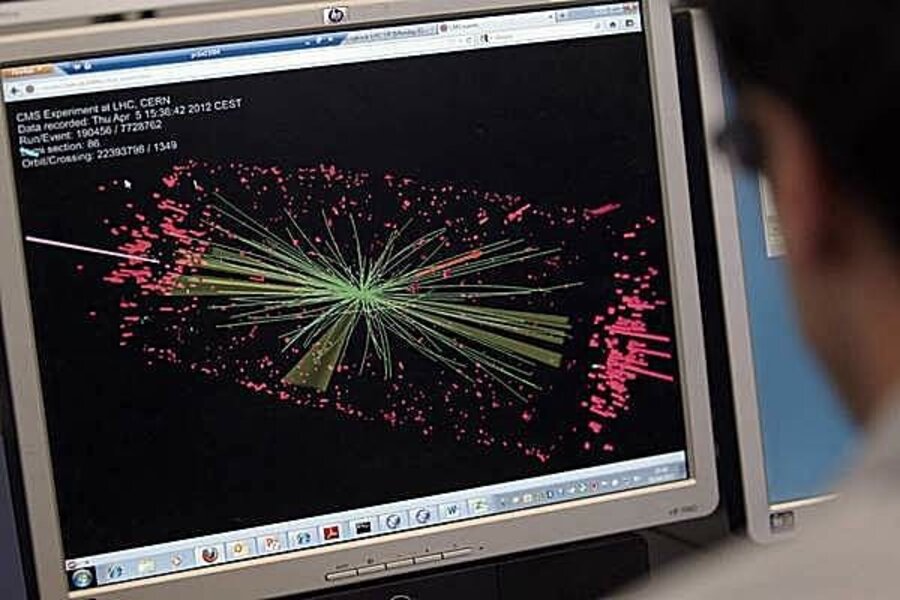Attempting to recreate Big Bang conditions, CERN scientists break energy record
Loading...
| GENEVA
Scientists came closer than ever to witnessing "Big Bang"-style conditions on Thursday after revving up the Large Hadron Collider at the CERN research centre to smash sub-atomic particles together faster and harder than ever before.
Physicists in the control rooms punched the air as multi-coloured arcs flashed across their screens, debris thrown up by the collisions of some of the millions of protons flung around the vast underground circuit at close to the speed of light.
"This is a great start to the 2012 run. It promises to be an amazing year for particle physics," said Oliver Buchmueller, a member of the CMS team that is conducting one of the two main experiments at CERN, which lies on the French-Swiss border.
The proton-smashers' big prize is the Higgs boson, the particle which - if it exists - explains why things have had mass since the birth of the universe 13.7 billion years ago.
Ramping the collider up to 8 Tera electron-volts, 15 percent more energy than last year, should produce up to 10 times more data than the previous two years of work on trying to replicate the conditions of the birth of energy and matter at the dawn of the universe.
More data means more certainty about whether the Higgs lies within the last narrow band of energy yet to be fully explored, or if its existence can be conclusively ruled out, which would entail a rethink of textbook physics and mainstream science.
But the new high speeds also mean more background noise and static for Higgs-hunters around the world to overcome.
The first tantalising glimpses of what might be the Higgs, postulated by British theoretical physicist Peter Higgs in 1964, were spotted in the Large Hadron Collider last year and revealed by researchers in December. CERN is now zeroing in.
"It really is a very small window, which has got smaller and smaller," said CERN director-general Rolf Heuer.
After discovering the mystery boson - often dubbed the "God particle" to the strong disapproval of most scientists and of Higgs himself - CERN could turn to more "science fiction" targets such as extra dimensions and the "dark matter" believed to make up around 25 per cent of the cosmos.
(Reporting by Robert Evans; Editing by Kevin Liffey)





